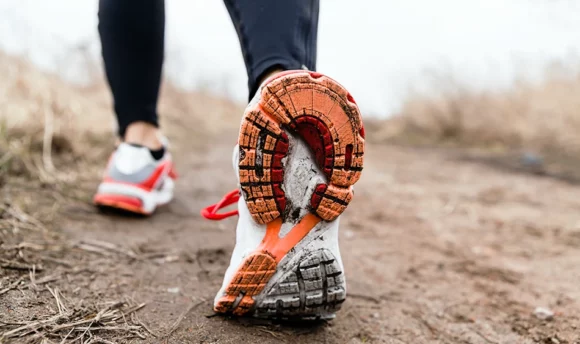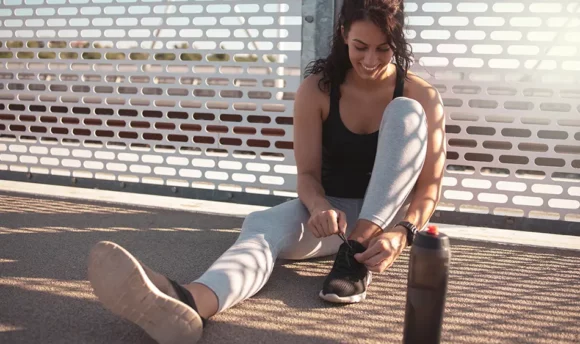How to Get Faster at Running: 5 Tips for Improving Your Speed
Increasing your running speed isn’t a quick thing to master, but there are ways to improve your pace gradually. Following the right tips should help you achieve your running goals in a few months. In this guide, we provide 5 proven strategies that can help you build speed and achieve your running goals.

Running at a steady pace is good for staying fit, but you will eventually reach a plateau. This means that your workouts are no longer challenging or beneficial to your body. It can feel unmotivating, boring, and pointless when running doesn’t meet your expectations.
Working on your speed is one way to overcome this obstacle and improve your overall endurance.
Keep reading to discover 5 strategies for running faster and tips that could boost your running speed.
5 Proven Strategies to Help You Run Faster
Doing the same kind of workout all the time won’t get you far. It takes time, practice, and variety to improve speed and reach new PBs. Even if you’re a beginner or out of shape, there are many ways to enhance your running performance.
Below are 5 strategies that can help you become a faster runner:
#1 Add speed workouts
Incorporating speed workouts into your training program is a great start. For example, interval runs are periods of high-intensity running and slower-pace jogs. You could sprint for 20–30 seconds, walk for 10 seconds, and then alternate between those two exercises for 5–10 minutes.
A study found that speed training improves aerobic endurance. This is because your body is using different muscle fibers during a run. Furthermore, running, in general, trains your heart, so you won’t get out of breath as often.
Tempo runs, on the other hand, are moderate-to-hard-intensity workouts that last between 20 and 40 minutes. You’ll run longer distances 30 seconds slower (per mile) than your average 5K race pace, which can help you adjust to faster running in the future.
If you don’t want a clear training schedule, you could try fartlek runs. This involves experimenting with different speeds to challenge yourself. For example, you might run from tree to tree to test your speed.
Racing every now and then can also improve your speed and count as a speed workout. You could arrange a race with some friends or participate in local challenges to test your speed and teach your body to run faster.
#2 Capitalize on strength training
Strength training is often overlooked when it comes to running. You should use weights or resistance bands to build muscle in your legs. This could prevent injuries that stop you from achieving your running goals.
Bodyweight exercises are great at strengthening your lower and upper body. Some exercises include reverse lunges, step-ups, single-leg deadlifts, and sumo squats. Arm exercises include push-ups, reverse plank, and lateral plank walk.
You should also train your core for greater balance and more power to hit faster paces. Try regular sit-ups every day and bicycle crunches to engage your stomach.
It’s believed that any type of lunge can strengthen the muscles you use to run. This ensures you have more power in your legs and can hold faster paces for a longer time. Aim to practice strength training 2–3 times a week to see real results.
#3 Incorporate hill running
Another form of exercise includes hill running, which builds power and strength in your lower body muscles. It involves running up inclined surfaces at a fast pace. You can incorporate speed workouts like hill sprints to boost your endurance.
The main benefit of hill running is that it strengthens your hamstrings, quads, calves, hip flexors, and glutes. It also helps improve running form, which essentially makes you a more efficient runner.
Find a hill in your area and practice interval training workouts. Sprint up the hill for 30 seconds and walk back down. Then, jog back up the hill for 60 seconds. It depends on your fitness level and how hard you want to push yourself.
#4 Improve your running form
Proper running form ensures you’re getting the most out of your workout routine. Always keep your core engaged and lean forward slightly during a run. Good posture also prevents leg injuries when your foot hits the ground.
Drills and sprints help you improve your running form. They are a set of repeated exercises that help you become more efficient in running. For example, butt-kicks and high knees are drill exercises that accentuate proper running mechanics and strengthen the leg muscles.
When doing sprints, keep your neck, shoulders, and head aligned with your hips. Swing your arms in time with your legs to maintain a sustainable pace. The way you run impacts your overall performance.
#5 Don’t forget about rest
Getting adequate amounts of rest is just as important as consistent training. You might feel tempted to rush your running journey, but it’s not worth injuring yourself or becoming fatigued.
Muscles need time to repair themselves. It’s been proven that having 2–3 rest days per week can speed up recovery and boost exercise performance.
The first thing you need is sleep. Older adults need at least 8 hours of consistent sleep every night to prevent chronic fatigue. Listen to some relaxing music or practice meditation to get a good night’s rest.
You should also eat the right food if you want to recover properly. Consuming plenty of nutrients can help the body to repair muscle. Eat high-protein foods like chicken, eggs, turkey, cottage cheese, and salmon.
Stretching is something people completely miss out on in their routines. Not only does it feel good, but it relaxes your muscles after running. A good 10-minute stretch improves recovery and lessens the pain of delayed onset muscle soreness (DOMS).
Incorporating these simple habits into your recovery routine will make a huge difference. To run faster, you have to listen to your body at all times.
How Long Does It Take to Get Faster at Running?
Some runners see results in 1–2 weeks, while others won’t notice a difference for one month. It depends on your training plan and running schedule. Building your speed takes time and plenty of training, so don’t feel disheartened if you can’t run faster in a few days.
Give yourself at least one full month to see progress. This is a good amount of time to test speed work and try new running workouts and techniques. Don’t rush a running routine since you might cause injury and slow down your pace completely.
With the right bodyweight exercises, recovery routine, and training plan, you can reach your goals. Speed development takes time, but with the right strategy, it can be achieved faster. Always listen to your own needs and take time out when your body needs to rest.
How to Get Faster at Running Long Distances
Do one long run per week to build up your endurance, and consider trying speed play to increase your pace. This involves changing your speed during a long-distance run. You might run faster for 3–5 minutes and do a slow jog for 30 seconds before alternating.
Start with the longest possible distance you can currently achieve. It doesn’t matter if it’s only one mile or three miles. What matters is that you can challenge yourself and complete the run without feeling too tired or unmotivated.
Try and do a long run 1–2 times a week to let your body adjust to the routine. Then, when running feels easier, add a mile to your run every week. There’s no need to rush your progress or add too many miles, as this can wear out your body quickly.
For more guidance, speak to a certified running coach. These professionals have more experience when it comes to long-distance runs. They can share tips on improving your endurance to not feel tired as often.
Never push yourself too hard, especially if you’re a beginner. It’s important to improve your speed over time and take small steps to reach your goals. An exercise routine needs to suit your current fitness level and pace.
A Word From a Personal Trainer
Running is a challenging exercise, but it’s also a very rewarding one. You can run through forests or hills to test your speed, endurance, and determination. Even running with friends can be enjoyable and give you extra motivation to achieve your goals.
Similarly to other cardio activities, running strengthens your bones and cardiovascular system. Feeling healthy is a big reason why people run in the first place. Most runners enjoy the burst of endorphins released during a hard run.
Remember that everyone has unique goals. Running faster will take time, so try not to rush the progress. Focus on resting your body throughout the week and eating good food to sustain high energy levels and promote recovery.
Conclusion
You need various components in your training plan, like strength training, sprints, and rest days, to see results. The plan has to be consistent and based on your individual needs. Build a sustainable running program that allows you to test your endurance without causing injury. Most people try interval training to improve their tempo and gain more power in their leg muscles.

















































 Select your language:
Select your language: 








